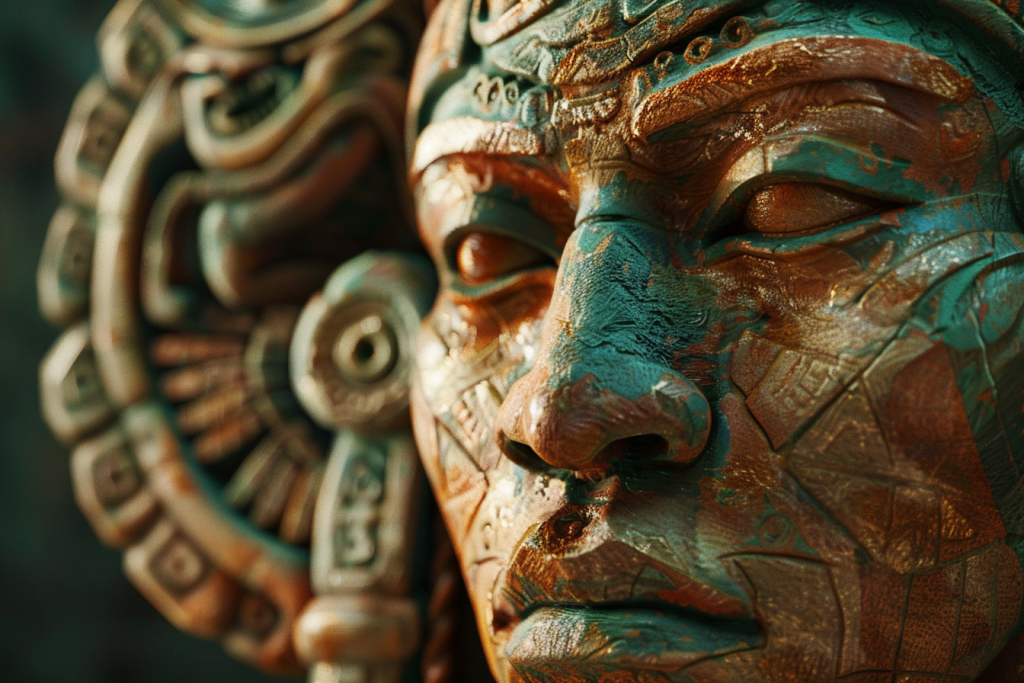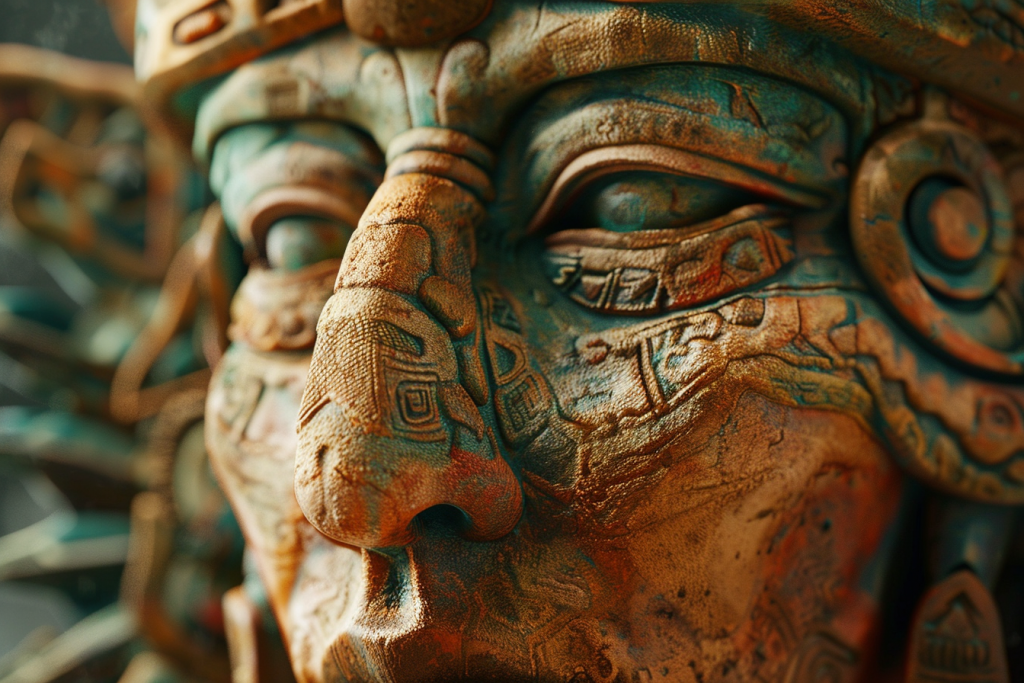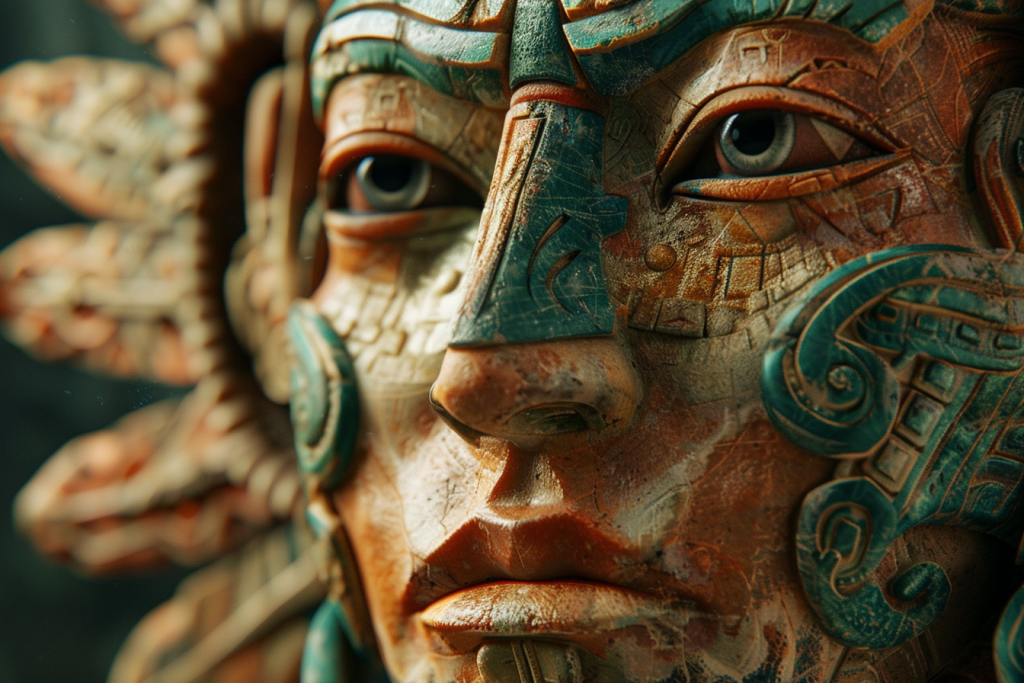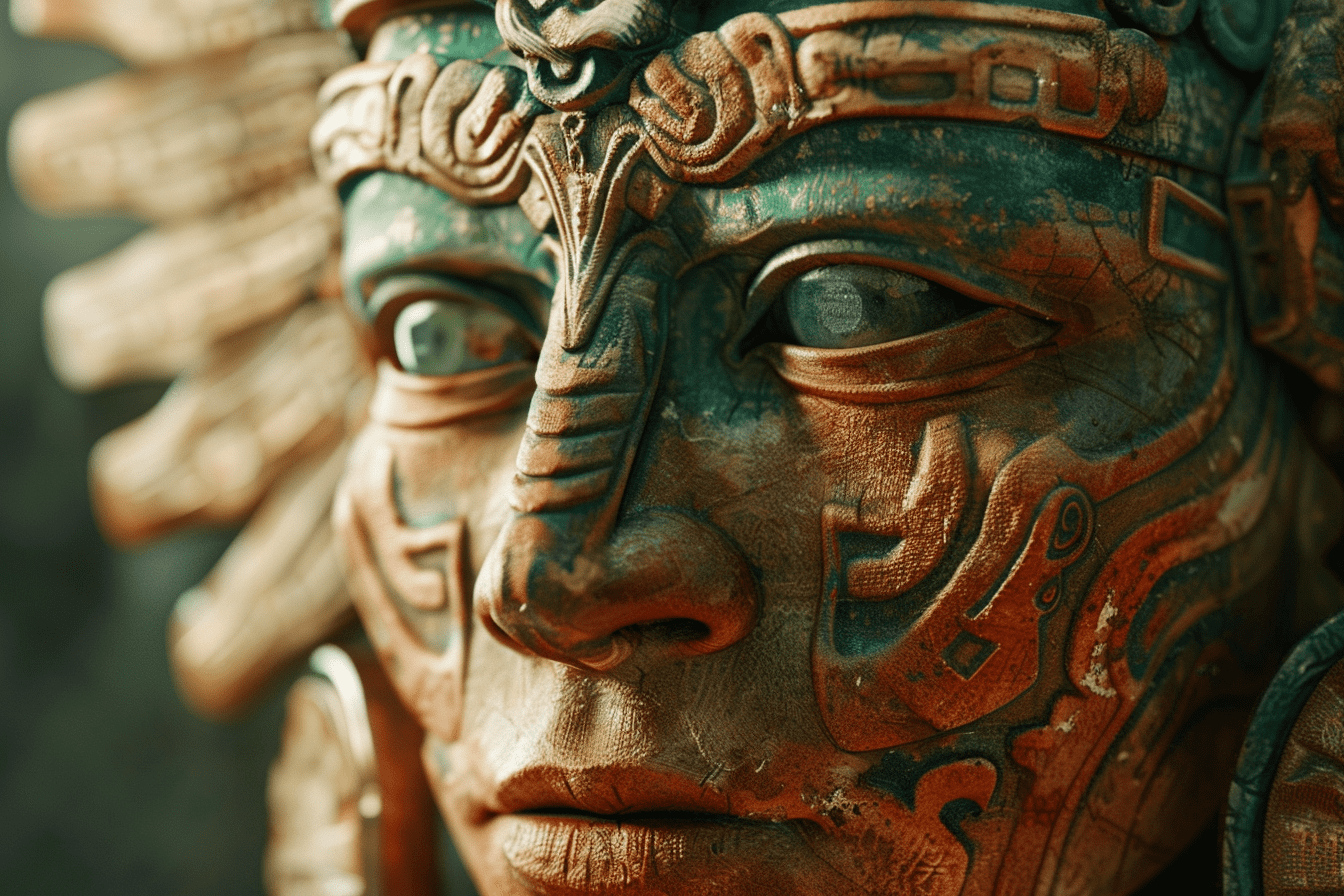Mythology and History
Origins of Itzamná
Itzamná, often regarded as one of the most significant deities in the ancient Maya pantheon, is traditionally viewed as a creator god and a patron of writing, learning, and the sciences. The origins of Itzamná are shrouded in the mists of Mesoamerican prehistory, with his name and attributes suggesting a deep-rooted significance in Maya mythology. Itzamná is frequently identified as the son of the creator couple Hunab Ku and the brother or consort of Ix Chel, a moon goddess associated with fertility and childbirth.
Get your dose of History via Email
Itzamná in Maya Mythology
In Maya mythology, Itzamná is credited with bringing the Maya civilization the essentials of their culture, including the calendar, agriculture, medicine, and writing. He is often depicted as a wise old man who could take the form of a bird, usually a macaw or a vulture, symbolizing his ability to traverse between the heavens and the earth. Itzamná is also said to have introduced cacao and maize to the Maya, further cementing his role as a nurturer of their civilization.

Historical Depictions and Interpretations
Historically, Itzamná has been depicted in various forms in Maya art and inscriptions, from the Classic period (c. 250–900 AD) through to the Postclassic period (c. 900–1500 AD). He is often shown in Maya codices (screen-fold books made from bark paper) and on stelae (upright stone slabs) as an aged figure with a large, hooked nose and square eyes, embodying wisdom and knowledge. Interpretations of Itzamná’s role have evolved over time, with early scholars emphasizing his function as a sky god, while more recent interpretations highlight his significance in the creation and maintenance of the cosmos.
Cultural Significance
Role in Maya Religion and Society
Itzamná held a central place in Maya religion and society, embodying the intellectual and spiritual pursuits of the Maya civilization. He was considered the ultimate authority on matters of ritual, calendar, and hieroglyphic writing, making him an indispensable figure in the religious and daily life of the Maya. Priests and scribes, who were key figures in Maya society, looked to Itzamná as their divine patron, seeking his guidance in their intellectual and spiritual endeavors.

Itzamná and the Maya Calendar
The Maya calendar, a complex system of timekeeping that combined a 260-day ritual calendar with a 365-day solar calendar, was believed to have been given to the Maya by Itzamná. This calendar played a crucial role in determining religious festivals, agricultural cycles, and the timing of sacred rituals, all of which were under the auspices of Itzamná.
Festivals and Rituals
Festivals and rituals dedicated to Itzamná were important events in the Maya religious calendar. These ceremonies often involved offerings of food, flowers, and incense, as well as the recitation of prayers and hymns in his honor. Such rituals underscored the deep reverence the Maya had for Itzamná, whom they saw as a guardian of their culture and a mediator between the human and divine realms.
Iconography and Symbols
Symbols Associated with Itzamná
Itzamná is associated with several symbols that reflect his multifaceted nature. The most common symbols include the Ceiba tree, which represented the universe’s central axis in Maya cosmology, and the Tzolk’in, the 260-day ritual calendar. Birds, particularly the macaw and the vulture, are also closely linked with Itzamná, symbolizing his celestial nature and his role as a messenger between the gods and humanity.

Artistic Representations in Maya Art and Architecture
Artistic representations of Itzamná in Maya art and architecture are widespread, showcasing his importance across different Maya city-states. He is frequently depicted in murals, pottery, and carvings, often surrounded by symbols of his divine attributes. In Maya architecture, Itzamná is sometimes represented by the orientations of buildings and ceremonial ball courts, which were aligned with celestial events and phenomena that were under his domain.
Comparison with Other Mesoamerican Deities
Itzamná shares several attributes with other Mesoamerican deities, such as Quetzalcoatl of the Aztec pantheon, who was also a creator god and a patron of learning and the priesthood. However, Itzamná’s specific association with the Maya calendar and writing system, as well as his role in agricultural and medicinal practices, distinguishes him within the broader context of Mesoamerican mythology. This comparison highlights the unique place Itzamná occupies in the ancient Maya belief system, underscoring the rich tapestry of Mesoamerican religious and cultural traditions.

